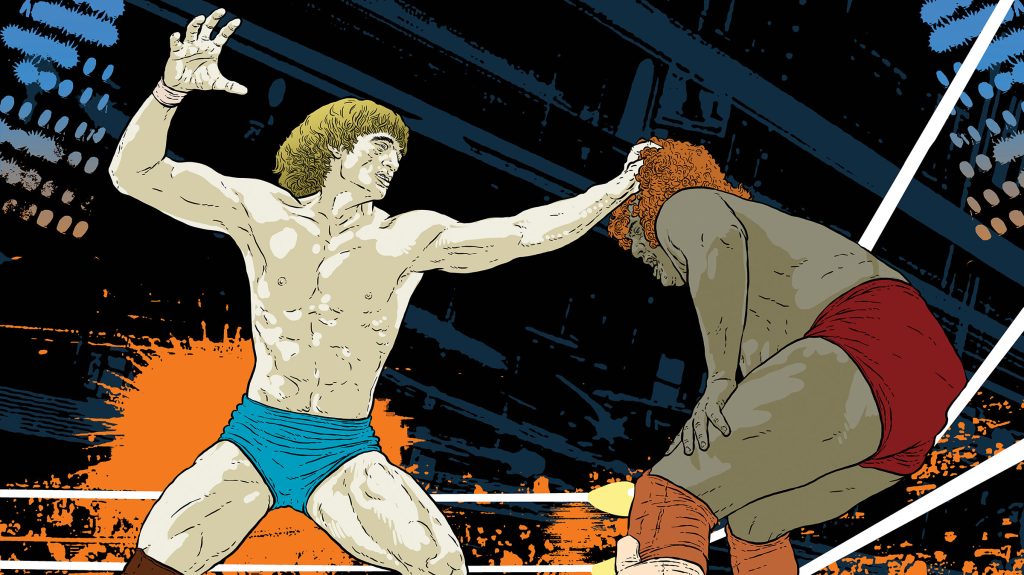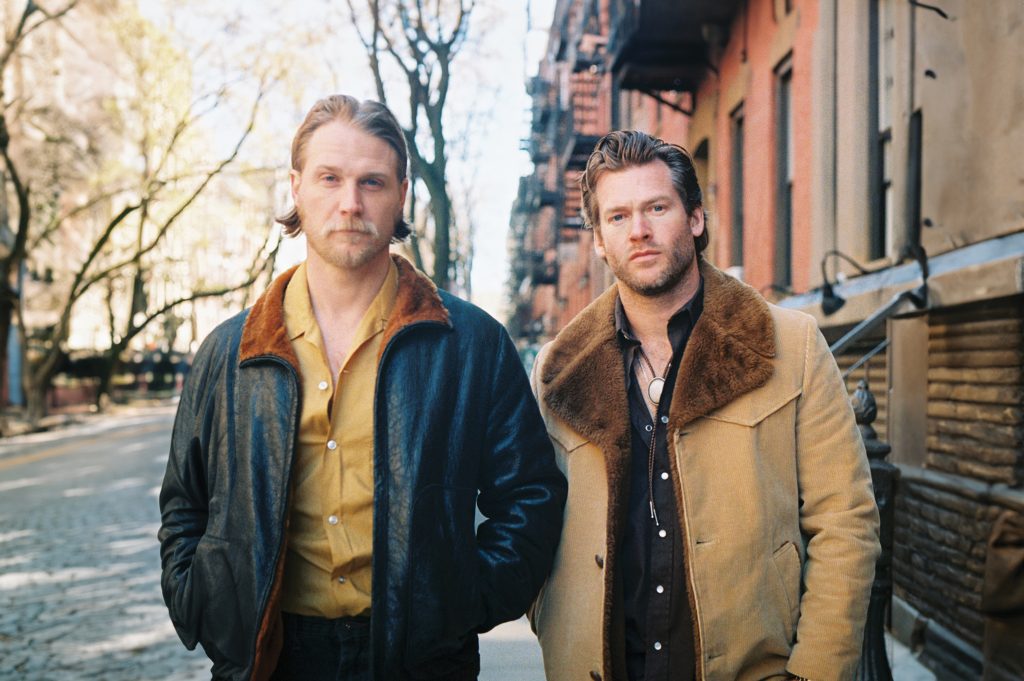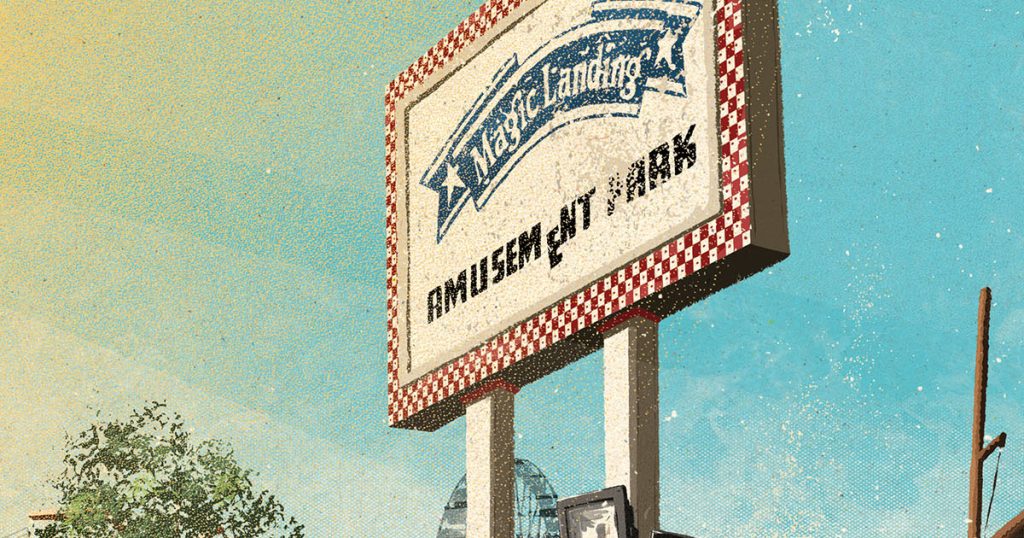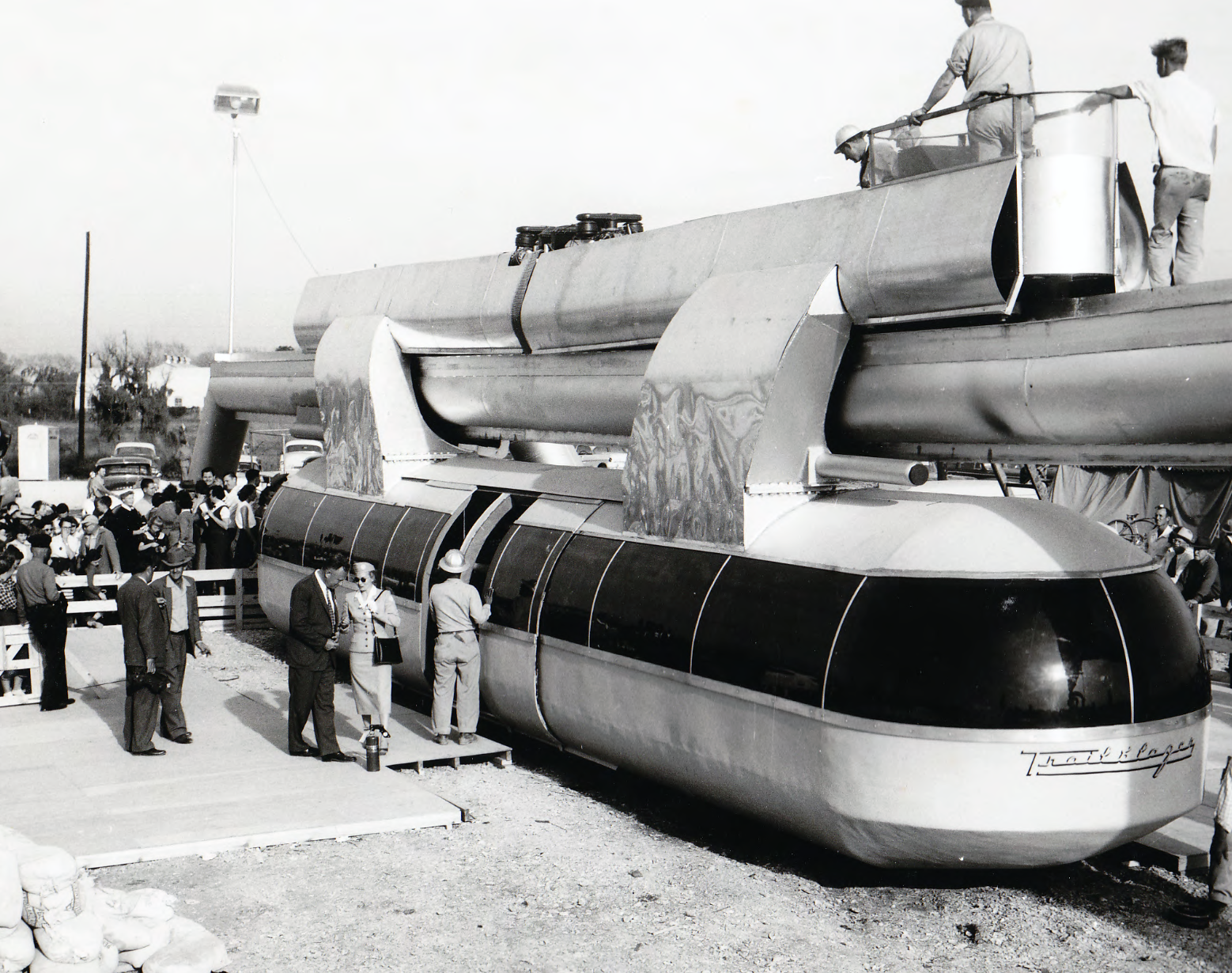
Murel Goodell installed a 970-foot test track for his first monorail, Trailblazer, in Houston in 1956. Photo courtesy of the Goodell Monorail Museum
Texas is known for many inventions—Dr Pepper, Liquid Paper, the frozen margarita machine, and even silicone breast implants. But one of the most impactful and longest-lasting inventions of Texan origin rarely gets its recognition as such: the monorail. In fact, most people attribute the invention and popularization to Walt Disney, who was a good friend and contemporary of transportation visionary Murel Goodell.
Goodell was a mechanical engineer, transit specialist, and entrepreneur from Houston. He was also the inventor of the modern monorail. After a visit to Germany—where the Wuppertal Schwebebahn, or the Wuppertal Suspension Railway, was invented and still operates to this day—he was inspired to create the pneumatic wheel in order to resolve issues he saw with the original design. Pneumatic wheels, filled with air pressure like modern car or bike wheels, and the straddle-beam design allow the cars to ride atop the beam instead of hanging below it like the German inspiration. Another pre-Goodell monorail was the gyro monorail, which had wheels that sat in the middle of the car balancing on top of a single rail.
“There were other monorail designs that ran on rails, but Murel invented the modern pneumatic tire that rides on top of the beam like you see at Disneyland,” said David Bethune, curator and researcher for the Goodell Monorail Museum. “The pneumatic wheels are at the center of the car, and it has another set of tires on the sides that go alongside of the concrete beam making it physically impossible for it to fall off. Having the pneumatic wheels on a concrete track made it ride smooth and quiet and without swinging around.”
This design not only stabilized the cars from a rider’s standpoint but also increased safety exorbitantly. Goodell’s improvements are what constitute the modern monorail that can be found in Disney World, Seattle, Tokyo, Mumbai, Chongqing, China, and other cities around the world.
Before Goodell’s advancements took off around the world, his first test and commercial tracks were both here in Texas. With his company, Monorail, Inc., Goodell installed a 970-foot test track at Arrowhead Park—a now-defunct racetrack near Old Spanish Trail and Main streets—in Houston in 1956. The event caught national attention, and Western star Roy Rogers and his wife, actress and singer Dale Evans, were two of the first guests invited to ride it. His hope was to draw people to the futuristic-looking invention, and hopefully sell the design to cities around the United States and the world.
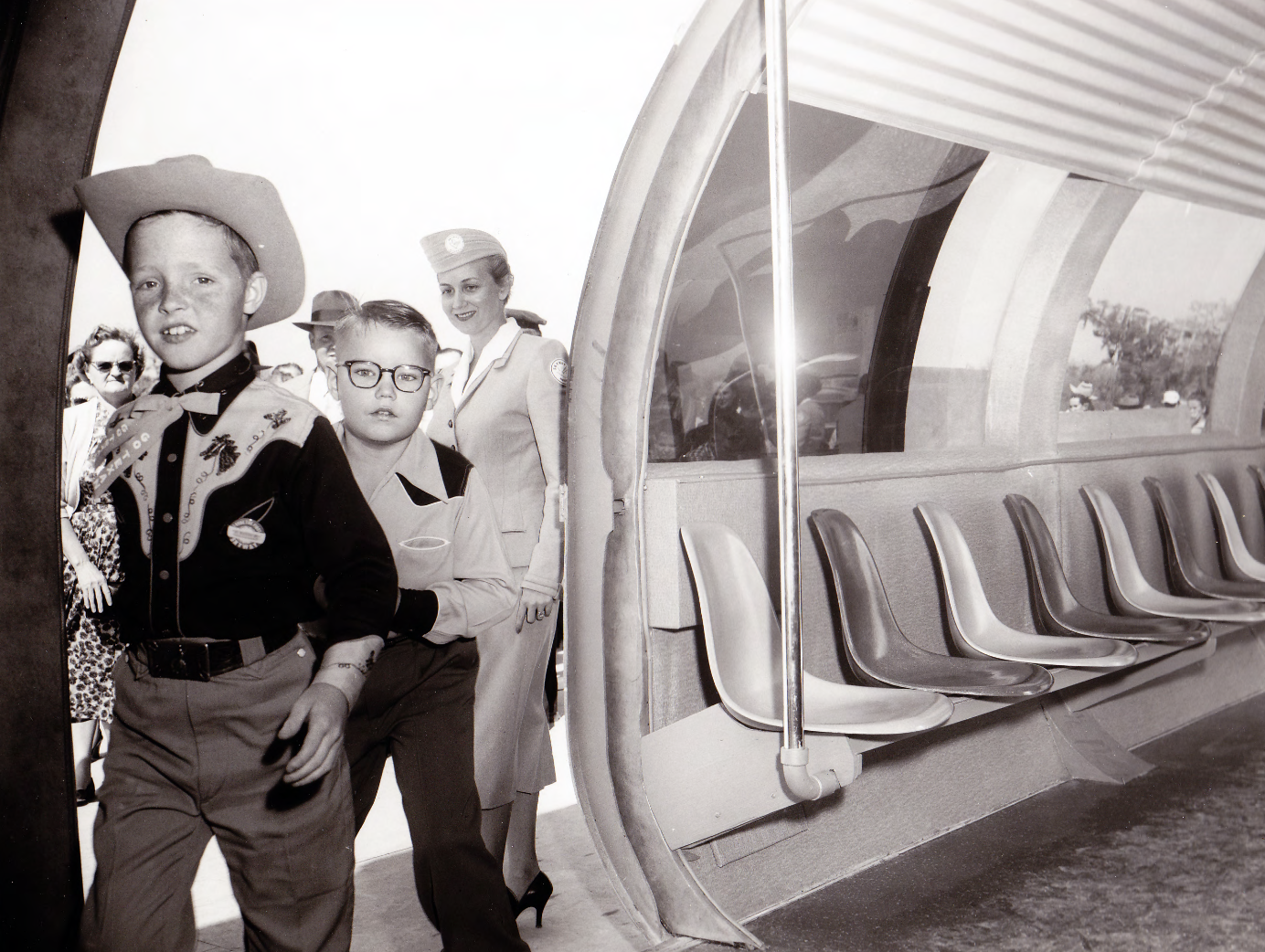
After testing in Houston, Goodell moved his monorail to the Texas State Fair in Dallas. Photo courtesy of the Goodell Monorail Museum
He succeeded in part by establishing the first commercial monorail in the country, Trailblazer, at the Texas State fair in Dallas in October of 1957. It was extremely popular and continued operating year-round charging 25 cents per ride until 1964. And then things came to a halt when another form of public transportation gained popularity. “[Goodell] was a genius inventor but terrible businessman and terrible presenter,” Bethune said. “But the nail in the coffin really was the bus industry.”
He shopped his design all around the state and country to no avail. In Houston specifically, there were no passenger trains at the time. Goodell presented his plan to the mayor and subsequently the transit office; those papers were then forwarded to the head of bus operations, who instantly shut down the idea to the benefit of the bus industry, according to archival papers about the plan.
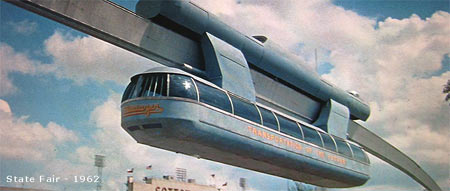
The monorail ran at the State Fair until 1964. Photo courtesy the Goodell Monorail Museum
Although the original Trailblazer monorail itself no longer exists, its roots still live on in Texas. In fact, an old Trailblazer train car was converted into a home in Wills Point east of Dallas. The car spent some time in a junkyard before it was rescued by a local named Malcolm Paisley. Originally, the house consisted exclusively of the car itself, but more permanent structures have been annexed over time as the house has changed hands. “The second guy, the guy that we bought it from, had an extension put on which is our master bedroom, and a closet and a bathroom,” said Gillian Stewart, a retiree who currently lives in the monorail house with her husband, Roger. “And I’m not sure who did it, but there’s a little loft bedroom above the living room.”
Stewart, who is originally from Hastings, England, moved to Dallas in ’86. In 1997, when she and Roger were looking for a new house, they reached out to their finance manager about buying a different house in Wills Point.
“He said, ‘Well I’ve got a customer that’s selling a house,’” Stewart said. “We came and looked at it and I absolutely fell in love.”
The home, which sits a quarter mile off the county road on its own private driveway, reflects the tranquil community of Wills Point. Covered in trees and undulating hills, the 2-acre property combines the open plains and piney woods representative of East Texas. And, as if it couldn’t get any better, the home also comes with a pole barn where Stewart used to keep her two horses until recently.
“I love living here,” she said. “I wouldn’t live anywhere else.”
Goodell proposed monorail plans in cities all across the U.S., including Los Angeles, New Orleans, Fort Lauderdale, and Washington, D.C. But for one reason or another, they were never built. And though the world of accessible and futuristic public transportation that Goodell envisioned never came to fruition, his work changed public transportation forever.
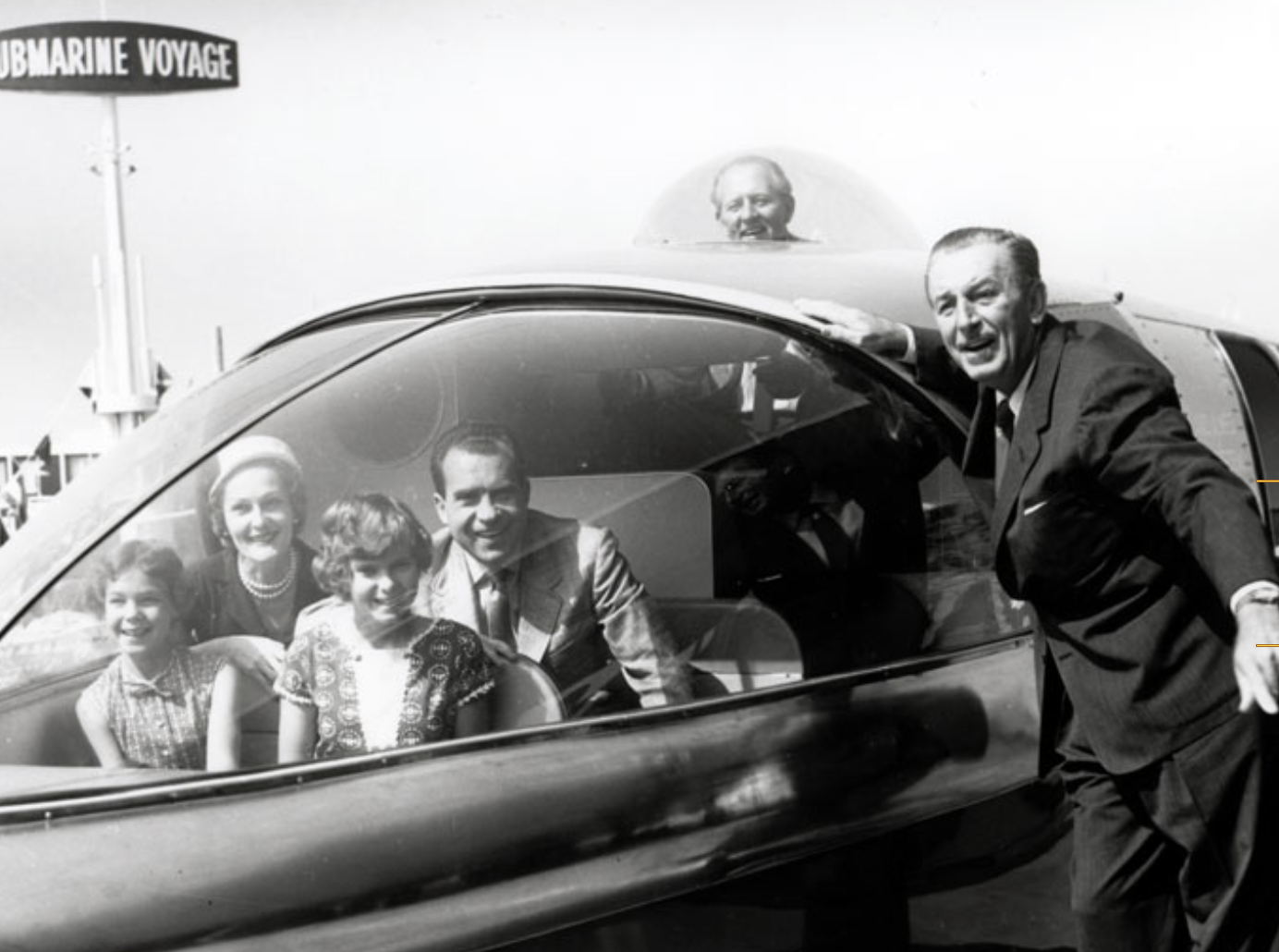
Disneyland’s iconic monorail debuted in 1959, featuring Goodell’s second-generation design. Walt Disney (right) invited then-Senator Richard Nixon and his family to be among the first riders. Photo courtesy the Goodell Monorail Museum
In 1959, Disneyland debuted its monorail, which was Goodell’s second-generation straddle-beam design. The monorail was established thanks in part to industrial Axel Lennart Wenner-Gren. He founded Alweg, a German transportation company that took over a portion of Monorail, Inc.’s operations. Wenner-Gren was able to popularize the pneumatic wheel and concrete beam from Goodell’s original schematics—the basis of all modern monorails around the world today.
“It’s all still the original stock,” Bethune said. “I think it’s amazing that in all this time no one has improved on Murel’s technology. There is no better monorail now than that monorail; it’s state-of-the-art still.”
